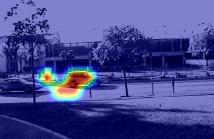
The IEEE Global Conference on Signal and Information Processing (GlobalSIP) is a flagship conference of the IEEE Signal Processing Society. GlobalSIP'15 will be held in Orlando, Florida, USA, December 14-16, 2015. The conference will focus on signal and information processing with an emphasis on up-and-coming signal processing themes. The conference will feature world-class speakers, tutorials, exhibits, and sessions consisting of poster or oral presentations. Outstanding papers will be selected for Best Paper Awards or Best Student Paper Awards; a paper is eligible for a best student paper award if the first author of the paper is a student. IEEE Signal Processing Society and National Science Foundation will provide travel grants to eligible students.
Rate control is very crucial for scalable video applications as it controls encoding bitrates so as to meet channel bandwidths while obtaining optimum encoding quality. In this paper, we proposed a new inter-layer rate control algorithm for H.264/SVC. One unique feature is that an effective switched model is proposed to predict the bit estimation used for encoding inter frames either from the previous frame of the current layer or from the current frame of the previous layer.
- Categories:
 13 Views
13 Views
- Read more about Shaking and Speech-smile Vowels Classification: An Attempt at Amusement Arousal Estimation from Speech Signals
- Log in to post comments
In this paper, we present our work on speech-smile/shaking vowels classification. An efficient classification system would be a first step towards the estimation (from speech signals only) of amusement levels beyond smile, as indeed shaking vowels represent a transition from smile to laughter superimposed to speech. A database containing examples of both classes has been collected from acted and spontaneous speech corpora. An experimental study using several acoustic feature sets is presented here, and novel features are also proposed.
- Categories:
 16 Views
16 Views
- Read more about Unsupervised Estimation Of Uncertainty For Video Saliency Detection Using Temporal Cues
- Log in to post comments
Presentation Slides for "Unsupervised Estimation Of Uncertainty For Video Saliency Detection Using Temporal Cues" at GlobalSIP 2015
- Categories:
 29 Views
29 Views
- Read more about Demand Side Management with a Human Behavior Model for Energy Cost Optimization in Smart Grid
- Log in to post comments
- Categories:
 18 Views
18 Views- Read more about Perceptual Long-Term Harmonic plus Noise Modeling for Speech Data Compression
- Log in to post comments
The harmonic plus noise model (HNM) is widely used for the modeling of audio signals. In this paper, we introduce perceptual frequency masking to the 2-band HNM, developed by Stylianou et al., applied to speech signals. An auditory model is used to recognize inaudible sinusoids, which will be removed from the set of model’s parameters in order to reduce the data size for speech coding.
- Categories:
 17 Views
17 Views- Read more about Perceptual Long-Term Harmonic plus Noise Modeling for Speech Data Compression
- Log in to post comments
The harmonic plus noise model (HNM) is widely used for the modeling of audio signals. In this paper, we introduce perceptual frequency masking to the 2-band HNM, developed by Stylianou et al., applied to speech signals. An auditory model is used to recognize inaudible sinusoids, which will be removed from the set of model’s parameters in order to reduce the data size for speech coding.
- Categories:
 13 Views
13 Views- Read more about Distributed Average Consensus with Deterministic Quantization: An ADMM Approach
- Log in to post comments
- Categories:
 8 Views
8 Views- Read more about Energy and Workload Management for Data Centers in Renewable-Integrated Power Grid
- Log in to post comments
This is the slides by Tianyi Chen, Xin Wang, G. B. Giannakis.
- Categories:
 14 Views
14 Views- Read more about Generalizing a Closed-Form Correlation Model of Oriented Bandpass Natural Images
- Log in to post comments
- Categories:
 7 Views
7 Views